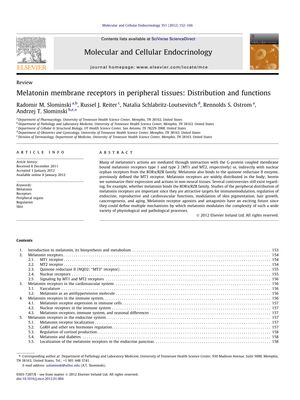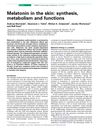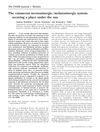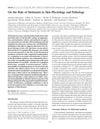Melatonin Membrane Receptors in Peripheral Tissues: Distribution and Functions
January 2012
in “
Molecular and Cellular Endocrinology
”
melatonin MT1 MT2 melatonin membrane receptors hair growth skin pigmentation antioxidant endocrine functions reproductive functions cardiovascular health cancer development aging autocrine action paracrine action intracellular signaling pathways quinone reductase 2 breast tissue ovarian function skin cancer gastrointestinal tract bone health osteoporosis kidney protection

TLDR Melatonin affects many body functions beyond sleep by interacting with specific receptors in various tissues.
The 2012 document reviews the widespread distribution and multifaceted functions of melatonin membrane receptors, MT1 and MT2, in peripheral tissues. It details how melatonin, primarily known for regulating circadian rhythms, interacts with these receptors and influences immunomodulation, endocrine and reproductive functions, cardiovascular health, skin pigmentation, hair growth, cancer development, and aging. The review also discusses melatonin's biosynthesis and metabolism, its role as an antioxidant, and the presence of melatonin in various organs, suggesting autocrine or paracrine action. The MT1 and MT2 receptors are implicated in numerous intracellular signaling pathways, and while MT3 was initially thought to be a receptor, it is actually the enzyme quinone reductase 2. The document underscores the importance of understanding the peripheral distribution of melatonin receptors for their potential as therapeutic targets. It also notes the presence of melatonin receptors in breast tissue, their role in ovarian function, the promotion of hair growth, and the prevention of skin cancer. Additionally, melatonin's effects in the gastrointestinal tract and bone health are highlighted, with implications for therapies in osteoporosis and kidney protection. The review acknowledges the foundational work of Dr. Aaron B. Lerner and NIH funding for research in this area.











